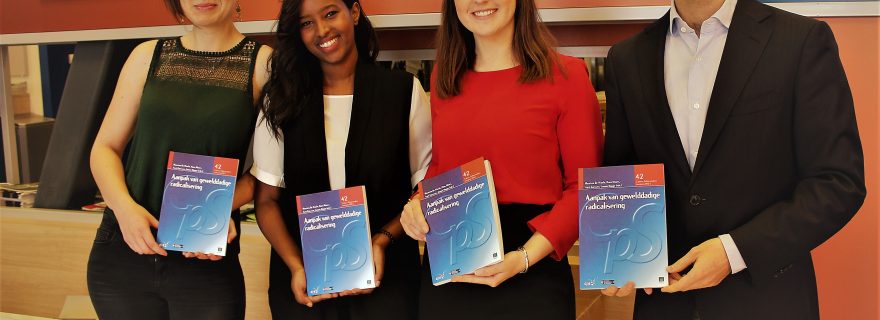'Governance of violent radicalisation’; need for a one dimensional terminology?
During a recent seminar at Leiden University's Institute of Security and Global Affairs, several views on dealing with violent radicalization were presented.
Researchers Elke Devroe and Daan Weggemans (both working at Leiden University's Institute of Security and Global Affairs) organized a seminar in The Hague at April 20, 2017. This sixth edition of the so-called “Cahiers op de Campus” was dedicated to the publication of The Cahier Politiestudies Aanpak van gewelddadige radicalisering (Dealing with violent radicalization). Several lectures were given during this seminar.
Bob de Graaff, Professor in intelligence- and security studies at Utrecht University and the Netherlands' Defence Academy, provided the kick off in his lecture “The ever changing phenomena of terrorism, radicalisation, extremism and fanaticism”. He observed the confusing conceptual diffuseness of these notions, which hinders to a large extent a successful approach. The answer to the question who is the “enemy” in this context stays too vague. Also because of the large amount of stakeholders, each with their own interests and definitions, the problem of jihadism becomes a “wicked problem”, according to De Graaff. The only solution for this kind of problem is reframing the phenomenon. Therefore, authorities have to develop an alternative narrative, that can compete with the strong, apocalyptic story of Islamic State.
Hans Moors, Partner E:M+MA: Experts in Media and Society was discussing “Radicalism, terrorism and organized crime: considerations on a layered approach”. The dread of Islamic radicalization and terrorism in the Netherlands is tangible. At the same time, the influence of organized criminal networks and subversive crime is rising. Both threats are considered mainly from a security and law enforcement point of view. In doing so, however, the actors in the security chain are losing sight of the complexity of these phenomena. From a Situational Action Theory (SAT) perspective, according to Moors, explaining the radicalization process shows much similarity to understanding crime causation. People radicalize and involve in serious and organised crime in specific personal circumstances, exposing themselves to settings with terrorism- or crime-supportive moral contexts, present in their more or less immediate environment. So SAT may help decision-makers and professional executives to understand and underpin – better than popular ‘staircase models’ do – where interventions should be focussed at. Which, as a result, can be the beginning of a logic interconnection between prevention, repression and aftercare, that is key to any successful approach to tackle subversive crime and violent radicalization.
Erwin Kerstens, Operational Specialist C, Service Regional Investigation, Police Unit East-Holland dealt with “Local management of a global theme, a search for an adequate approach of radicalisation and terrorism”. Consolidated practices do not exist yet, on which authorities can rely. The struggle against jihadism is complex and implies an integrated approach. Erwin Kerstens revealed at the occasion of his lecture how the Police Unit of East-Holland functions, by means of “case tables”. He stressed the importance of the involvement of the local authorities, the public prosecution office and the police. The central position of local authorities seems to be the most determining factor for success in the fight against jihadism, he concluded.
Mieke Struik, Strategic Analyst of the National Police, Police Unit East Holland, DRIO, Analysis and Research was lecturing on the “Identification and registration of asylum-seekers in the Netherlands. Scenarios for the future of the national police”. She explained the procedure for asylum-seekers when they enter the Netherlands and are confronted with the Administration for Identification of Foreigners and Trafficking Human Beings of the national police (AVIM). They are located in a care-centre and have to follow a procedure for identification and registration. Besides the establishment of their identity, the intention of the procedure is to diminish the chance that criminals find a safe haven in the Netherlands. By means of a arithmetic model a number of inflow scenario’s were discussed, pointing to the strengths and weaknesses of the actual procedure. The most important conclusion is that there is not sufficient capacity for encountering the migration crisis. The consequences are: too long waiting lists and overcrowded asylum centres. In certain cases, this can function as a push-factor for radicalisation. An illegal stay in the Netherlands, after the refusal of a asylum request, can function as a pull-factor.
Daan Weggemans, PhD researcher, reflected upon the content of Cahier Police Studies n° 42, concerning the “Approach of violent radicalisation”. He specifically mentioned the merits of this Journal on elaborating on actual practices and policy options and therefore bringing something different than most scholars do. Moreover, he highlighted the tendency to oversimplify the pathways towards violent extremism and terrorism.



